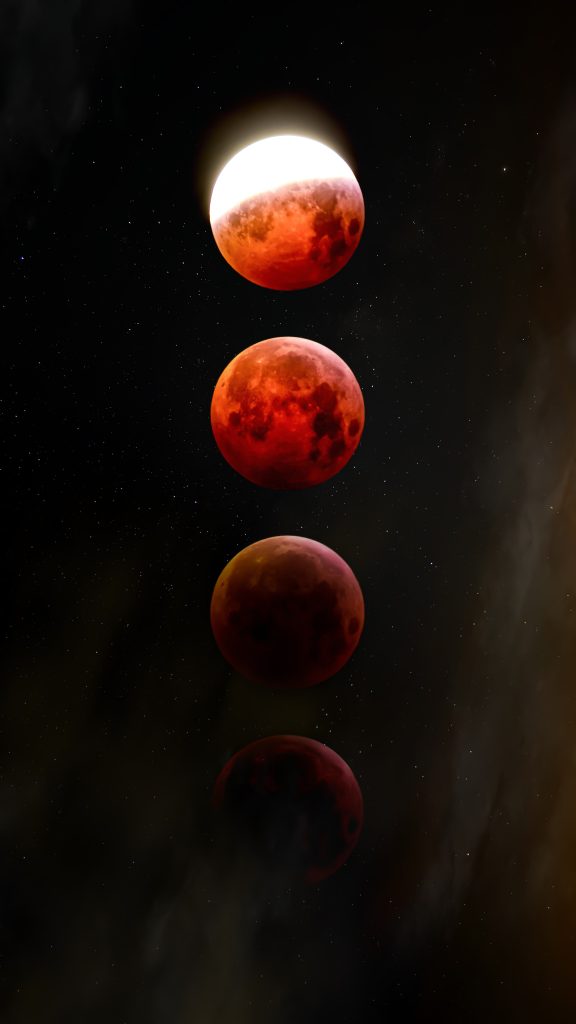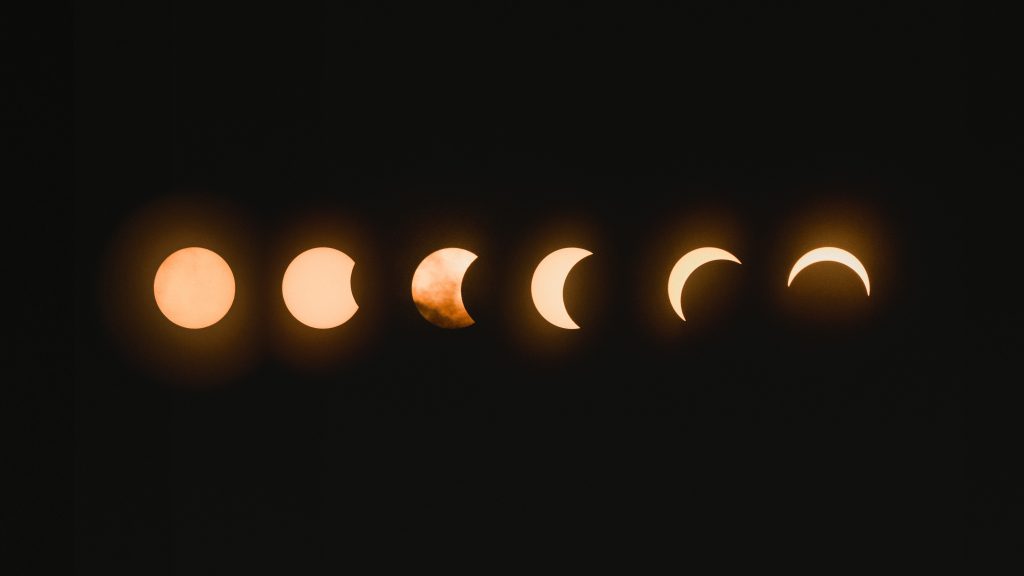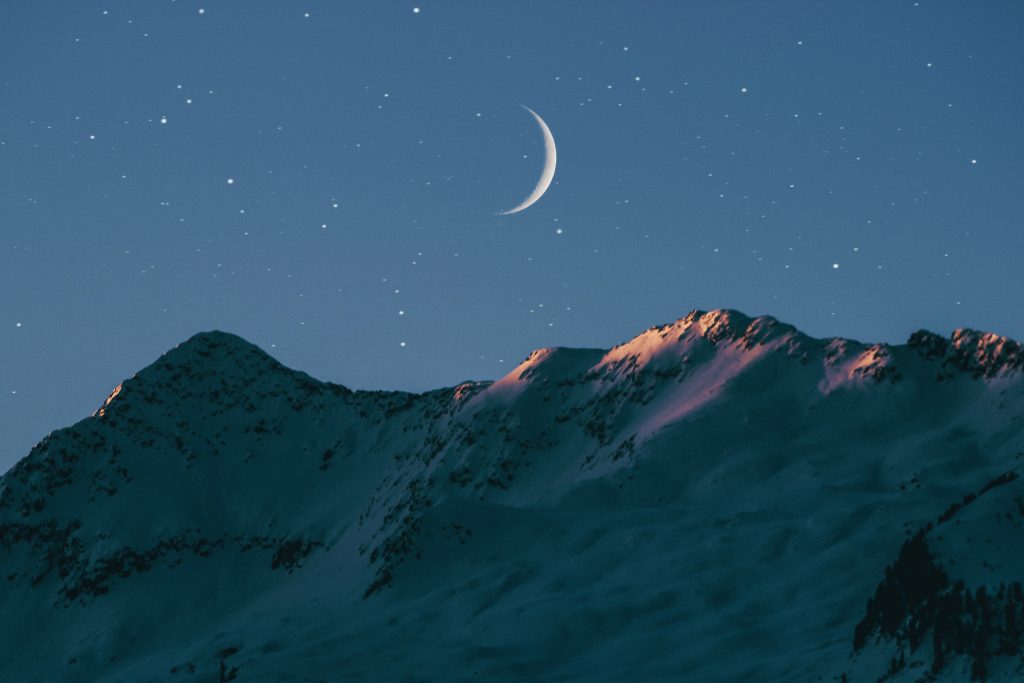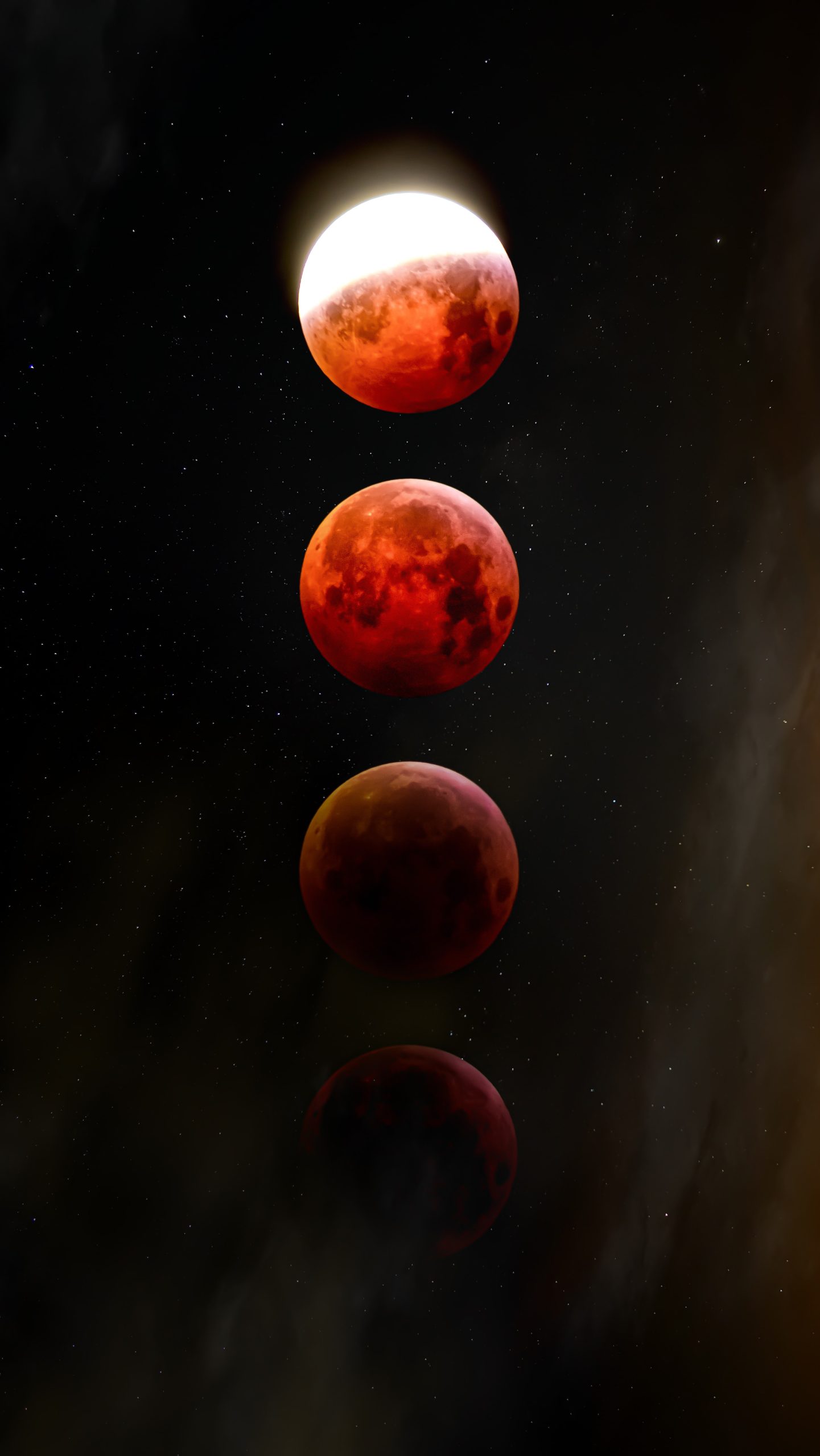Of course you can! With a telescope, you have the incredible opportunity to observe the Moon’s valleys and rilles in all their splendid glory. The Moon, our nearest celestial neighbor, is a fascinating object to explore with its captivating landscape. By using a telescope, you’ll be amazed at how much detail you’ll be able to see on its surface.
As you peer through the lens, you’ll be able to observe the intricacies of the Moon’s valleys and rilles, which are essentially long, narrow depressions and channels etched across its surface. These features are believed to have been formed by a combination of lava flows, impact craters, and other geological processes. With a good quality telescope, you’ll be able to discern the shapes, depths, and dimensions of these lunar formations, providing you with a deeper understanding and appreciation of our closest celestial companion. So go ahead, grab a telescope and get ready to embark on an enchanting journey of lunar exploration.

Using a Telescope to Observe the Moon
Types of Telescopes
When it comes to observing the Moon, there are two main types of telescopes that you can choose from: refractor and reflector telescopes. Refractor telescopes use lenses to gather and focus light, while reflector telescopes use mirrors. Both types have their own advantages and disadvantages, so it’s important to consider your observing preferences and budget before making a decision.
Best Time for Moon Observation
The best time to observe the Moon is during a clear night when the Moon is in a waxing or waning phase. This is because during the full moon phase, the surface of the Moon appears bright and can wash out surface details. By observing during the waxing or waning phases, you can take advantage of the shadows created by the sunlight hitting the Moon at an angle, which enhances the visibility of the Moon’s valleys and rilles.
Choosing the Right Telescope
When selecting a telescope for observing the Moon, there are a few key factors to consider. Firstly, you want to ensure that the telescope has enough magnification power to clearly observe the Moon’s surface details. A telescope with a larger aperture will also allow for better light gathering, resulting in clearer views. Additionally, consider the portability and ease of use of the telescope, as well as any additional features such as motorized tracking for smooth and precise movements.
Accessories for Moon Observation
To enhance your Moon observation experience, there are several accessories that you can consider. A moon filter can be used to reduce the brightness of the Moon, allowing for better visibility of the surface details. An adjustable eyepiece can help you fine-tune the focus and magnification. Additionally, a lunar map or guidebook can be helpful in identifying the different valleys and rilles on the Moon’s surface.
Understanding Moon’s Valleys and Rilles
Definition of Valleys and Rilles
Valleys and rilles are geological features found on the surface of the Moon. Valleys are long, narrow depressions that can stretch for hundreds of kilometers. They are typically formed through the collapse of lava-filled underground tunnels or due to tectonic activity. Rilles, on the other hand, are narrow channels or grooves that are believed to have been formed by the flow of lava or by the collapse of subsurface structures.
Formation of Valleys and Rilles
The formation of valleys and rilles on the Moon is primarily attributed to volcanic activity and tectonic movements. The Moon was once geologically active, with volcanic eruptions and the movement of tectonic plates shaping its surface. During volcanic activity, magma would flow and fill underground tunnels, forming lava tubes. Over time, these tubes could collapse, creating the long, narrow valleys that we observe today. Tectonic activity, similar to what occurs on Earth, can also lead to the formation of valleys and rilles.
Notable Rilles on the Moon
There are several notable rilles on the Moon that have captured the attention of astronomers and enthusiasts alike. One such rille is Hadley Rille, located on the edge of Mare Imbrium. It is a winding channel that stretches for approximately 120 kilometers and is believed to have been formed by a volcanic lava flow. Vallis Alpes is another prominent valley, situated near the edge of Mare Imbrium. It is a deep and narrow valley that spans about 166 kilometers and is thought to have formed through tectonic activity.
Requirements for Observing Moon’s Valleys and Rilles
Telescope Specifications
To effectively observe the Moon’s valleys and rilles, it is important to have a telescope with sufficient magnification power and a large enough aperture. A telescope with a minimum aperture of 4 inches and a magnification of at least 100x is recommended. This will allow you to see the details of the lunar surface more clearly, including the valleys and rilles.
Ideal Viewing Conditions
To maximize your chances of observing the Moon’s valleys and rilles, it is crucial to have optimal viewing conditions. Choose a night with clear skies and minimal light pollution. Observe from a location with minimal atmospheric turbulence, such as a cool and calm area away from city lights. The steadier the atmosphere, the sharper and more detailed your observations will be.
Moon Phase Considerations
While the Moon can be observed throughout its entire cycle, the best time to observe the valleys and rilles is during the waxing or waning phases. During these phases, the shadows cast by the sunlight hitting the Moon at an angle create greater contrast, highlighting the surface details. It is also advisable to avoid observing during the full moon, as the bright surface can wash out the finer features.
Preparation for Moon Observation
Location Selection
Choosing the right location for moon observation is vital to ensure optimal viewing conditions. Look for a spot away from bright city lights and other potential sources of light pollution. Additionally, try to find a location with an unobstructed view of the moon, avoiding any tall buildings or trees that may hinder your line of sight.
Moon Observation Schedule
To make the most of your moon observation experience, it is helpful to have a schedule. Familiarize yourself with the moon’s phases and plan to observe during the waxing or waning phases for better visibility of the valleys and rilles. Additionally, check the weather forecast to ensure clear skies and plan your observation sessions accordingly.
Gathering Essential Equipment
Before embarking on your moon observation journey, gather the essential equipment. Make sure you have a sturdy tripod or mount to provide a steady platform for your telescope. Bring along a comfortable chair or blanket for extended observing sessions. Don’t forget to carry any accessories you may need, such as a moon filter, adjustable eyepiece, lunar map, or guidebook.

Techniques for Observing Moon’s Valleys and Rilles
Choosing the Right Eyepiece
Selecting the right eyepiece is crucial for observing the moon’s valleys and rilles. A higher magnification eyepiece can allow you to zoom in closer and observe finer details. However, keep in mind that higher magnification also reduces the brightness of the image, so finding the right balance is essential.
Observing Surface Details
To observe the moon’s valleys and rilles more effectively, take your time and be patient. Allow your eyes to adjust to the darkness and take note of the topography of the lunar surface. Look for shadows and variations in brightness, as these can provide valuable indications of the presence of valleys and rilles.
Using Magnification
Experiment with different levels of magnification to find the optimal balance between clarity and brightness. Increasing the magnification can reveal finer details, but be mindful of the atmospheric conditions and image stability. A steady atmosphere is crucial for high magnification viewing.
Enhancing Contrast and Clarity
To enhance the contrast and clarity of your moon observations, consider using a moon filter. This filter reduces the brightness of the moon, allowing for more detailed views. Additionally, adjusting the focus of your telescope and optimizing the collimation can help sharpen the image and reveal finer surface features.
Notable Moon’s Valleys and Rilles to Observe
Vallis Alpes
Vallis Alpes is a striking lunar valley located near the edge of Mare Imbrium. Spanning approximately 166 kilometers, it is a narrow and deep valley that offers an intriguing sight for observation. Its formation is believed to be the result of tectonic activity, and its jagged edges and towering walls make it a fascinating subject for exploration.
Hadley Rille
Hadley Rille is another notable feature on the Moon’s surface. Situated on the edge of Mare Imbrium, it is a winding channel that stretches for around 120 kilometers. Thought to have formed from a volcanic lava flow, Hadley Rille showcases the geological history of the Moon and offers a captivating view for observers.
Vallis Schroteri
Vallis Schröteri, also known as Schröter’s Valley, is an impressive lunar rille located on the northeastern edge of Mare Imbrium. Spanning approximately 160 kilometers, it is a relatively wide and shallow rille, believed to have been formed by the collapse of subsurface cavities. Its unique shape and location make it an excellent target for moon observation.
Mare Serenitatis Rilles
Mare Serenitatis, or the Sea of Serenity, is a fascinating lunar mare that is home to several notable rilles. These rilles, such as Rimae Plinius and Rima Hesiodus, offer insight into the volcanic history of the Moon. Observing these rilles can provide a deeper understanding of the geological processes that shaped and continue to shape our celestial neighbor.

Tips and Tricks for Successful Moon Observation
Steady Viewing Platform
To ensure steady and stable observations, make use of a sturdy tripod or mount for your telescope. This will help reduce vibrations and provide a stable platform for comfortable viewing. If possible, consider investing in a motorized tracking system that can compensate for the Earth’s rotation and keep the moon centered in your field of view.
Patient Observation
Observing the Moon’s valleys and rilles requires patience. Take your time and carefully scan the lunar surface for subtle features. Allow your eyes to adjust to the darkness and make note of any changes in shadows and brightness. With patience, you will be rewarded with clearer and more detailed views.
Avoiding Light Pollution
Light pollution can significantly impact the visibility of the Moon’s valleys and rilles. Choose a location away from bright city lights and other sources of light pollution to ensure optimal observing conditions. If observing from a city, consider using light pollution filters that can help minimize the impact of artificial lights.
Recording and Documenting Observations
Keep a record of your moon observations by taking notes and making sketches. This will not only help you remember your observations but also provide valuable data for future reference. Consider using a digital camera or smartphone adapter to capture images of the Moon’s valleys and rilles, allowing you to revisit your observations and share them with others.
Challenges and Limitations of Moon Observation
Atmospheric Conditions
Atmospheric conditions play a significant role in moon observation. Turbulence in the Earth’s atmosphere can cause image distortion, making it challenging to observe fine details. To mitigate this, choose nights with stable atmospheric conditions and minimal turbulence for the best possible views.
Complexity of Rilles
Rilles are intricate and complex features, and their interpretation can sometimes be challenging. Identifying specific rilles and understanding their formation may require reference to lunar maps, guidebooks, and additional research. Developing a deeper understanding of lunar geology can enhance your ability to identify and appreciate the various rilles on the Moon’s surface.
Impacts of Light and Shadows
Light and shadows are crucial for observing the Moon’s valleys and rilles. While shadows can enhance the visibility of these features, the angle of the sunlight and the presence of external light sources can affect the clarity of the observed details. It is essential to consider these factors and adjust viewing conditions accordingly.
Equipment Limitations
The limitations of your equipment can impact the quality of your moon observations. A telescope with a larger aperture and higher magnification capabilities will provide better clarity and visibility. However, even with the best equipment, certain limitations such as atmospheric conditions or light pollution may still affect the overall viewing experience.
Benefits and Discoveries of Moon Observation
Contribution to Scientific Research
Observing the Moon’s valleys and rilles can contribute to ongoing scientific research. Amateur astronomers and enthusiasts play a crucial role in providing valuable data that can be used to enhance our understanding of lunar geology and its evolution over time. By recording and sharing observations, you become part of a larger scientific community dedicated to unraveling the mysteries of the Moon.
Understanding Lunar Geology
By observing the Moon’s valleys and rilles, we gain valuable insights into its geological history. These features tell a story of volcanic activity, tectonic movements, and the shaping forces that have shaped the lunar surface over billions of years. Studying and understanding lunar geology not only expands our knowledge of the Moon but also provides a broader understanding of geological processes in our solar system.
Unveiling Mysteries of Moon’s Past
Moon observation offers an opportunity to unravel the mysteries of the Moon’s past. By studying the valleys and rilles, we can gain insights into the processes that have occurred on the Moon’s surface and the changes that have taken place over time. These observations can contribute to a better understanding of the Moon’s formation, its history of volcanic activity, and the potential for future exploration and colonization.
Conclusion
Observing the Moon’s valleys and rilles with a telescope provides a fascinating and rewarding experience. By choosing the right telescope, understanding the lunar geography, and practicing effective observation techniques, you can explore the Moon’s surface and uncover its hidden wonders. From the jagged valleys of Vallis Alpes to the winding Hadley Rille, the Moon offers a rich tapestry of geological features waiting to be observed and appreciated. So, grab your telescope, find the perfect location, and embark on a journey to explore the mysteries of our celestial neighbor. Happy moon observing!











